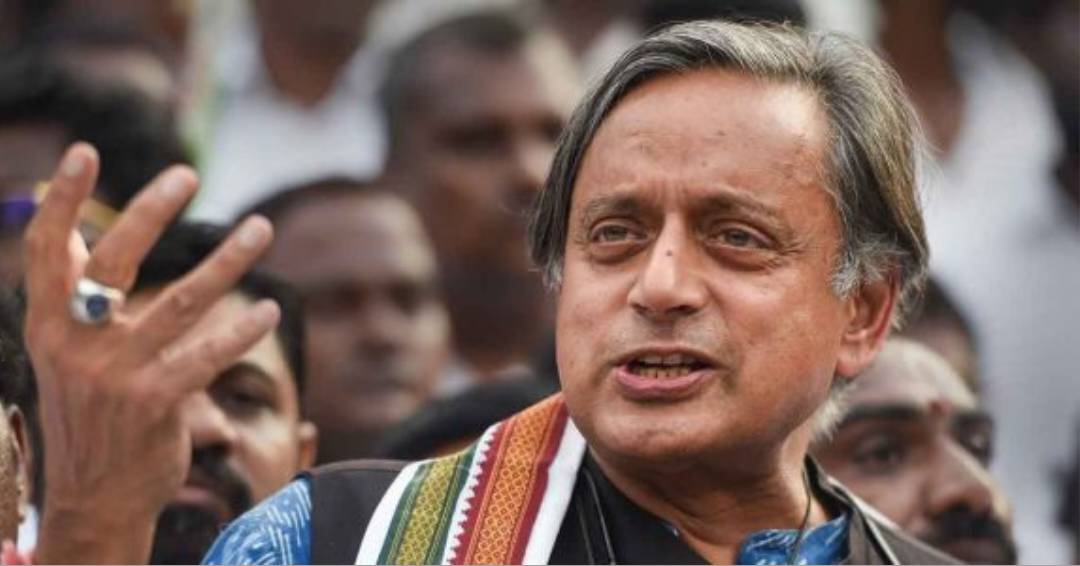
The state of Kerala is facing an imminent threat to its political clout in the Lok Sabha, the lower house of the Indian Parliament. This concern arises from the approaching expiration of the 42nd amendment, which was introduced by former Prime Minister Indira Gandhi in 1977. The amendment aimed to freeze the representation of Lok Sabha members based on the population figures of the 1971 census.
According to Shashi Tharoor, a Member of Parliament from the Congress party, there is growing uncertainty regarding the renewal of the 42nd amendment, especially if a Bharatiya Janata Party (BJP) government remains in power after 2026. Tharoor expressed his apprehensions during the launch of ‘India’s Federal Setup: A Journey Through Seven Decades,’ a book written by R. Mohan, a former Income Tax commissioner.
Tharoor points out that indications of the amendment’s doomed fate came from the instructions given to the 15th Finance Commission, which was tasked with considering the 2011 census data instead of relying on the 1971 census. The Finance Commission plays a crucial role in the allocation of tax revenues to states. The decision to abandon the 1971 census-based formula marked a significant departure from the long-standing practice.
The importance of the 42nd amendment lies in its historical context. Indira Gandhi introduced the amendment to address the implementation of population control measures in the country. It aimed to freeze Lok Sabha representation at the 1971 census level, ensuring that states that effectively implemented population control policies were not penalized, while those that failed to do so were not rewarded. For 25 years, finance commissions followed this formula for allocating tax revenues to states.
Interestingly, even the BJP government led by Atal Bihari Vajpayee renewed the 42nd amendment for another 25 years in 2001, without any debate and with unanimous support from both houses of Parliament. However, the current political climate suggests a shift in the BJP’s stance, especially considering the population disparities between northern and southern states.
Tharoor highlights the significant population growth in northern states, particularly in the so-called “cow belt” Hindi-speaking states, compared to the relatively controlled population growth in southern states like Kerala and Andhra Pradesh. This population disparity raises legitimate concerns about the representation and distribution of resources in a federal system.
The impending lapse of the 42nd amendment in 2026 poses two possibilities, as outlined by Tharoor. One scenario involves retaining the current 543 Lok Sabha seats, leading to a decrease in the number of MPs from Kerala, which currently holds 20 seats. Alternatively, if the number of Lok Sabha seats increases to avoid reducing any state’s representation, many states, particularly those in the north, are expected to gain seats.
Tharoor predicts that the total number of Lok Sabha seats could potentially surpass 700, with northern states receiving the majority of the increased seats. He cites the example of Kerala, which has 20 seats with a population of around 40 million, compared to Uttar Pradesh (UP), with a population of 220 million, but having 80 seats, four times the number of Kerala. The formula being discussed suggests that Kerala may retain 20 seats, while UP could see its seat count increase to at least 120. Similar population trends are observed in other southern states as well.
The implications of this potential shift in representation extend beyond political influence. Tharoor warns that the dominance of northern states in terms of parliamentary seats could hinder the ability of southern states to block constitutional amendments. With the majority of MPs coming from Hindi-speaking states, issues such as declaring Hindi as the national language could be passed without effective opposition from the south. Tharoor expresses concerns about the unity and integrity of the country, particularly highlighting the potential impact on neighboring Tamil Nadu.
The disparities in fiscal benefits further exacerbate the inter-state inequities. States with poor levels of education, high fertility rates, and population growth receive a disproportionate share of India’s revenue, while high-performing southern states like Karnataka receive less in return. Tharoor provides examples of how taxes paid by states like Uttar Pradesh fetch a higher return from the central government compared to states like Karnataka. These disparities have widened over time, posing challenges to the principles of fairness and balanced development in a federal system.
In conclusion, the possible expiration of the 42nd amendment in 2026 poses a significant threat to Kerala’s political influence in the Lok Sabha. The potential implications extend beyond Kerala and raise concerns about the representation, fiscal benefits, and unity of the country. The dynamics between northern and southern states, population disparities, and the need for a fair and balanced federal system come into sharp focus, urging policymakers to address these issues for the long-term stability and harmony of the nation.

Post Your Comments